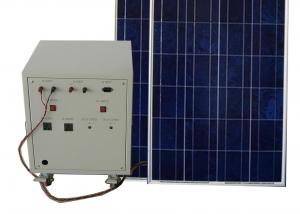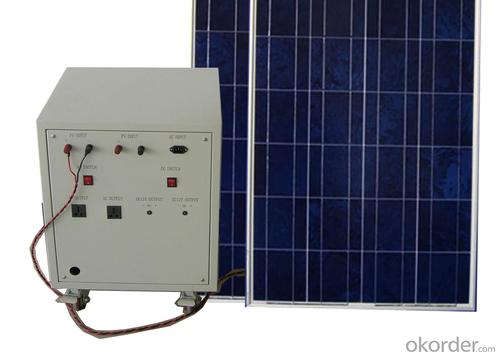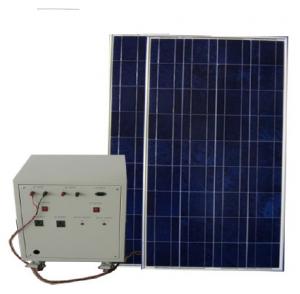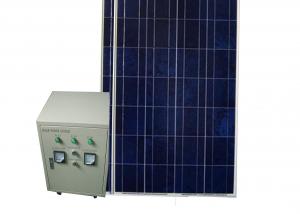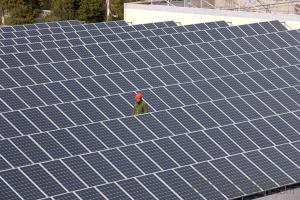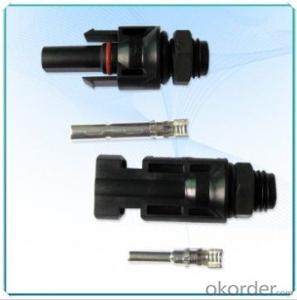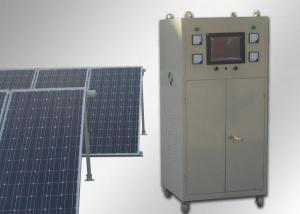Solar Energy Systems Penrith - CNBM Solar Home System CNBM-K3 (200W)
- Loading Port:
- China Main Port
- Payment Terms:
- TT or L/C
- Min Order Qty:
- 1 set set
- Supply Capability:
- 1000 sets per month set/month
OKorder Service Pledge
OKorder Financial Service
You Might Also Like
Brief Introduction of Solar Energy System CNBM-K3 (200W)
CNBM International is highly recognized by its business partners and clients all over the world and has obtained rapid development under the spirit of win-win .With CNBM HomeSystem-K3(200W),
We will carry on the mutual beneficial,innovative and revolutionary trading structure as we did before,
create value for our employees,share holders and clients and benefit the whole society in our future development.Please contact us ,if
you have interest in CNBM Home System-K3 (200W),don’t hesitate!
The Sketching of Solar Energy System CNBM-K3 (200W)
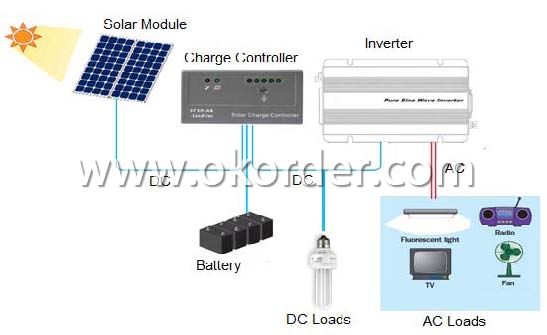
Components of Solar Energy System CNBM-K3 (200W)
PV Array:
Convert sunlight instantly into DC electric power. Formed by the solar modules (also called photovoltaic modules) in accordance with the system requirements for series and parallel.
Solar Charge Controller:
A charge controller may be used to power DC equipment with solar panels. The charge controller provides a regulated DC output and stores excess energy in a battery as well as monitoring the battery voltage to prevent over charge or over discharge. An inverter can be connected to the output of a charge controller to drive AC loads.
Inverter:
Converts DC output power of photovaltaic soalr panels into standard AC power for use in the local off-grid electrical network. It is a critical component in a photovoltaic system, allowing the use of ordinary commercial appliances.
Battery banks:
Stores energy when there is an excess coming in and distribute it back out when there is a demand. Solar PV panels continue to re-charge batteries each day to maintain battery charge.
Technical data of Solar Home System CNBM-K3 (200W) | ||
Inverter | Rated load power | 500W |
Output wave | Pure sine wave | |
Output voltage | DC 24V | |
Output frequency | DC:12V AC:220V | |
Precision of output | 50HZ/60HZ | |
Precision of output frequency | ±6% | |
Solar panel | Pmax | 100W*2PCS |
Vmp | 18.4V*2 | |
Imp | 5.44A | |
Charger | Charger voltage & current | 24V 10A |
Battery | Capacity | 12V 50AH*2 |
Power box | Spray paint iron box,with input,output,ammeter,voltmeter,master swith and so on. | |
Package of Solar Home System CNBM-K3 (200W) | ||||
Part | Size(L*W*H mm) | Weight(kg) | 20’(pcs) | 40’(pcs) |
Power box | 580*520*540 | 60 | 96 Sets | 240 Sets |
Solar panel | 1120*670*30 | 17 | ||
Battery | 230*310*220 | 40 | ||
Factory Picture of Solar Energy System CNBM-K3 (200W)
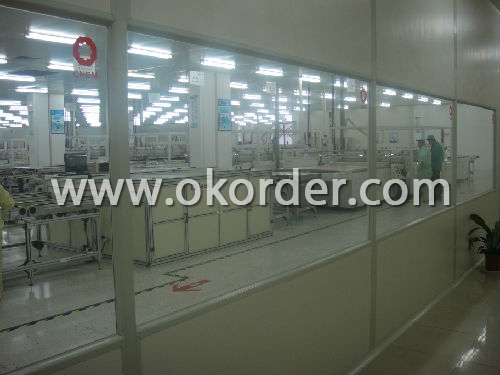
Package Picture of Solar Energy System CNBM-K3 (200W)
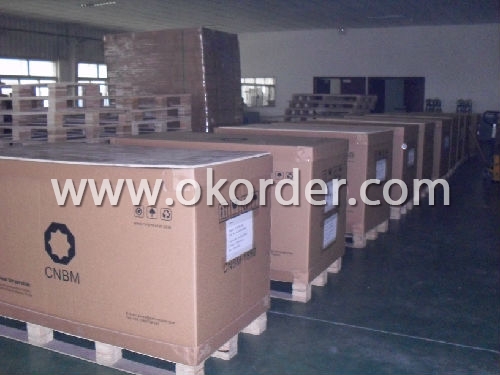
- Q: What is the role of solar energy systems in reducing energy inequality?
- Solar energy systems play a crucial role in reducing energy inequality by providing affordable and sustainable energy solutions to underserved communities. These systems can be easily installed in remote areas, enabling access to electricity in regions that are often overlooked by traditional energy infrastructure. By harnessing the power of the sun, solar energy systems offer a renewable and clean alternative, reducing the dependence on fossil fuels and lowering energy costs for disadvantaged households. Additionally, solar energy can empower communities by providing job opportunities in the installation and maintenance of these systems, stimulating local economies and fostering self-sufficiency.
- Q: Are there any limitations to installing a solar energy system?
- Yes, there are limitations to installing a solar energy system. Some common limitations include the availability of suitable space for solar panels, the orientation and tilt of the roof, shading from nearby objects or trees, and the cost of installation. Additionally, the amount of sunlight received in a particular location and the local regulatory framework can also pose limitations on the installation of a solar energy system.
- Q: What is the role of voltage regulators in a solar energy system?
- The function of voltage regulators within a solar energy system is to guarantee that the voltage output of the solar panels remains regulated and maintained within a specific range. Solar panels produce direct current (DC) electricity, which must be converted to alternating current (AC) in order to be utilized in homes and businesses. Nevertheless, the voltage output of solar panels can fluctuate due to varying factors such as sunlight intensity, temperature, and system load. Voltage regulators, also referred to as charge controllers, are responsible for stabilizing the voltage output of the solar panels. They constantly monitor the voltage level and make necessary adjustments to prevent overcharging or undercharging of the batteries or electrical loads connected to the system. By maintaining a consistent voltage, voltage regulators safeguard the batteries from potential damage caused by overcharging, which can reduce their lifespan. They also prevent undercharging, ensuring that the batteries are charged to their optimal capacity, thereby maximizing their efficiency and performance. Furthermore, voltage regulators play a critical role in safeguarding electrical devices connected to the solar energy system. They avert voltage spikes or surges that could potentially harm sensitive equipment like inverters or appliances. To summarize, voltage regulators are indispensable components in a solar energy system as they regulate and stabilize the voltage output of the solar panels, providing protection for batteries and electrical devices against potential damage.
- Q: Can solar energy systems be used in areas with limited space?
- Yes, solar energy systems can be used in areas with limited space. There are various options available such as rooftop solar panels, solar carports, and even solar-powered windows, which can effectively harness solar energy in compact spaces. Additionally, advancements in technology have led to the development of smaller and more efficient solar panels, allowing for installation in areas with limited surface area.
- Q: What is the impact of lightning on solar panels?
- The impact of lightning on solar panels can be significant and potentially damaging. Lightning strikes can cause immediate damage to the solar panels themselves, leading to malfunctions or complete destruction. The intense heat generated by lightning can melt or vaporize the materials used in the solar panels, resulting in irreparable damage. Moreover, lightning strikes can also cause electrical surges that can travel through the solar panel system and damage other connected equipment, such as inverters, charge controllers, or batteries. These power surges can overload and fry the delicate electrical components within the system, rendering them inoperable. To mitigate the impact of lightning, solar panel installations often include surge protectors or lightning arrestors to redirect the high-voltage electrical currents away from the solar panels and other sensitive equipment. These protective measures help to minimize the risk of damage to the solar panel system. However, even with these precautions in place, lightning strikes can still pose a threat to solar panels. Therefore, it is advisable to have a comprehensive insurance policy that covers lightning damage for solar panel installations. Regular maintenance and inspection of the solar panel system can also help identify any potential issues caused by lightning strikes and enable timely repairs. Overall, the impact of lightning on solar panels can be detrimental, leading to immediate damage and potential long-term consequences for the entire solar panel system. Taking precautionary measures, having proper insurance coverage, and monitoring the system's condition are essential to minimize the risk and ensure the longevity of solar panel installations.
- Q: How do solar energy systems contribute to reducing the risk of power outages during extreme weather events?
- Solar energy systems can help reduce the risk of power outages during extreme weather events by providing a decentralized and reliable source of electricity. Since solar panels generate electricity directly from sunlight, they are not dependent on the traditional power grid, which is vulnerable to damage during storms or other severe weather conditions. By harnessing solar energy, individuals and communities can maintain access to power even when the main grid fails, reducing the impact of power outages and increasing resilience during extreme weather events.
- Q: Can solar energy systems be used in areas with limited access to technical expertise?
- Yes, solar energy systems can be used in areas with limited access to technical expertise. The design and installation of solar energy systems have become increasingly user-friendly and accessible over time. There are now simplified and plug-and-play solar kits available that can be easily installed and maintained by individuals with limited technical knowledge. Additionally, organizations and initiatives are providing training and educational resources to empower local communities in these areas to adopt and manage solar energy systems effectively.
- Q: What is concentrated solar power (CSP)?
- Concentrated solar power (CSP) is a renewable energy technology that utilizes mirrors or lenses to concentrate sunlight onto a receiver, which converts the solar energy into thermal energy. This thermal energy can then be used to generate electricity or stored for later use. CSP systems are typically large-scale and can provide reliable and clean power, even during periods of low sunlight.
- Q: Are there any financing options available for solar energy systems?
- Yes, there are several financing options available for solar energy systems. These include solar loans, solar leases, power purchase agreements (PPAs), and government incentives such as tax credits and rebates.
- Q: How do solar energy systems affect water conservation?
- Solar energy systems can have a positive impact on water conservation by reducing the need for water-intensive conventional power generation methods. Unlike fossil fuel power plants that rely on large amounts of water for cooling, solar energy systems do not require water for operation. This helps to preserve and conserve water resources, especially in areas facing water scarcity or drought conditions. Additionally, solar energy systems can be used to power water pumps and purification systems, further promoting sustainable water management practices.
Send your message to us
Solar Energy Systems Penrith - CNBM Solar Home System CNBM-K3 (200W)
- Loading Port:
- China Main Port
- Payment Terms:
- TT or L/C
- Min Order Qty:
- 1 set set
- Supply Capability:
- 1000 sets per month set/month
OKorder Service Pledge
OKorder Financial Service
Similar products
Hot products
Hot Searches
Related keywords
